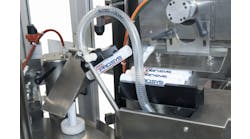Implement Reliability at Your Plant in 5 Easy Steps
Reliability deployments don’t have to be complicated to be successful. My most recent project has been leading a maintenance department at a large facility that plateaued after its initial start-up phase. The current situation, as I found it, was a resource-heavy organization that had begun to accept the harsh conditions of firefighting as a permanent feature of daily life. It was hard to see how we could target world class maintenance.
Here's the straight-forward, five-step plan we implemented to kick start our reliability journey.
1. Focus on Corrective Work
There's a time and a place for preventative maintenance, and it isn’t when there are fires to put out. In fact, PMs can easily become a burden as a result of being a typical maintenance KPI. It is normal to see a backlog heavily loaded with non-value-added jobs that are regularly “pencil whipped” to bolster metrics for upper management.
To free up crucial resources for corrective work, scrap most of your PMs. Basics that cost little in manpower compared to benefits in reducing downtime should still be maintained, such as daily rounds and lube routes.
2. Schedule ASAP
Before preventive work—the hallmark of reliability—can really take hold, it is necessary to reduce active breakdowns. One important way is to increase wrench time. Adding headcount is usually slow and difficult, so a focus on workforce efficiency is more palatable and wiser in the long run.
Scheduling improves wrench time because unscheduled work requires more resources to line up on the fly. A reactive organization can’t afford that waste. The learning curve for scheduling is difficult, so start as soon as possible. Down the road the workload balance will shift from primarily corrective to preventive. It will become imperative for the maintenance department to schedule proficiently so that PMs can be executed as designed and at the proper frequency.
3. Supervisors Assign Jobs
Supervisors at reactive facilities are putting out fires just as much as techs, which means their efficiency is likely suffering as well. Poor supervision means even less wrench time. A workload of a little more than 100% should be assigned to each technician at the beginning of the shift; this workload should integrate breakdowns and scheduled work, ideally on a board for clear visual communication.
Throughout the day, the supervisor should check progress and balance break-in priorities with the schedule. This strategy will reduce the administrative burden on your supervisors and increase technician efficiency at the same time.
Like scheduling, there are important long-term benefits to managing technicians in this way. Schedule discipline, which is necessary for proper PM execution, is difficult to establish in reactive environments where teams are used to immediately jump on breakdowns. In a similar vein, supervisors need to learn how to handle schedule break-ins while maintaining the discipline required to execute planned work.
4. Address Bad Actors
In parallel with the previous steps, it's essential to address bad actors. Factories without a robust reliability operation are constantly putting out fires, and better organization through scheduling won’t change that. The number of new fires must be reduced as well. The pareto principle applies here: 80% of your break-ins are caused by 20% of your equipment. Engineering resources should lead the charge in identifying the 20% and tackling root cause.
This shouldn’t be necessarily very expensive either. I have often found that creativity handily trumps capital spending. The goal isn’t to fix everything, just to create enough breathing room for the reliability effects of proper scheduling and PMs to start bearing fruit. Leave the expensive options to the side as they will likely take more time and lobbying to implement.
5. Organize Stores
Reactive maintenance departments have reactive storerooms, so a warehouse reorganization is always in the cards as part of a reliability deployment. It's a hedge against the risk of major downtime waiting for critical spares. Engineers should establish critical BOMs in parallel with addressing bad actors to identify the right parts to stock. They should then also organize the physical warehouse so that it is easy to use and keep organized (5S, for example), otherwise any gains made in this area will quickly erode.
In sum, proper inventory control is essential to achieving stability, so turn your storeroom from a liability into a competitive advantage.
Taking the First Step
These five steps can be deployed in large or small plants at any stage of development. More experienced reliability professionals may choose to apply them to their entire plant, while those with less experience may want to try a smaller pilot area before expanding.
Bear in mind that there are essentially two parallel paths, one for the technicians and another for engineers. It's important that both progress in parallel. Our plant has seen dramatic improvement in a short amount of time, although the devil really is in the details. Each plant must go through its own journey, and hopefully this plan can help.
Implement Reliability at Your Plant in 5 Easy Steps was originally published on Plant Services, an Endeavor Business Media partner site.









